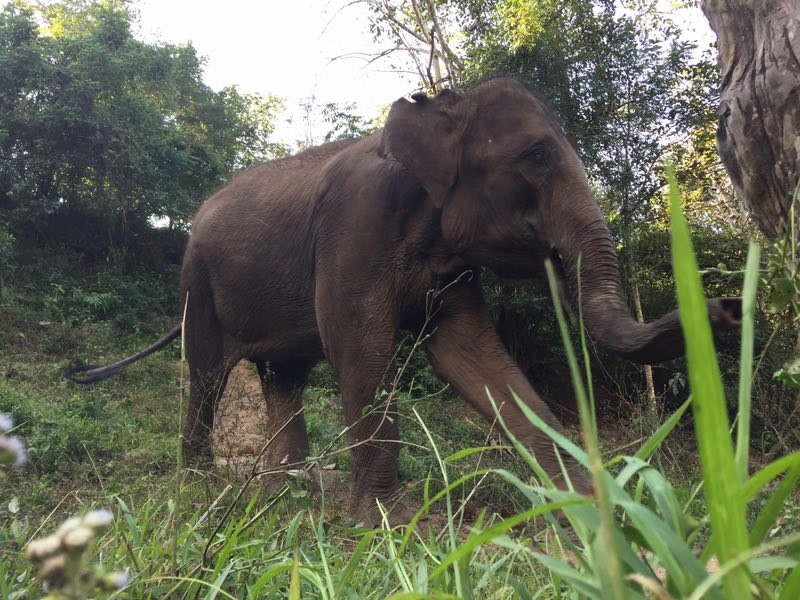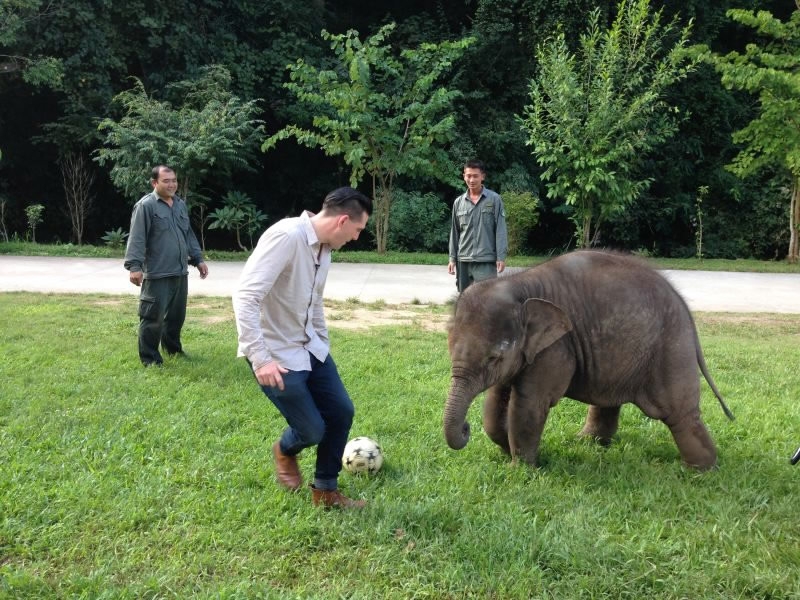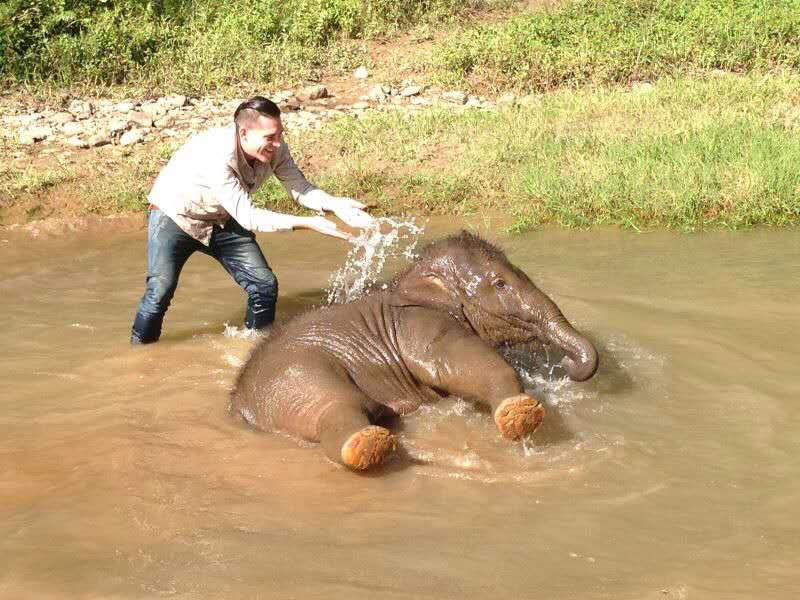By CGTN's Joey Catanzaro
Xiong Chaoyong holds his ground as the elephant charges towards him through the undergrowth, five tonnes of majestic creature reducing small trees and branches to kindling in her wake. About 500 people are killed by wild elephant attacks around the world every year, but despite being well aware of this, Xiong waits with a smile as the behemoth rushes towards him.
At the last moment the elephant veers, slows, and comes to a halt.
She snorts and watches, eyes alive with intelligence, as Xiong moves to rub her flank and gently croon to her.
The elephant’s name is Ran Ran, and she is a fully gown, wild Asian elephant.
Xiong is her “dad”, and further down the forested hills lies their home: Yunnan Province’s Wild Asian Elephant Rescue Centre, a place opened about a decade ago to save and ideally rehabilitate, sick and injured elephants.

The elephant Ran Ran / VCG Photo
Yunnan is home to China’s only population of wild Asian elephants. Most of them live here, in Xishuangbanna Prefecture, close to the border with Myanmar, Laos and Vietnam.
Incredibly, at a time when wild elephant populations around the world are declining, the number of Asian elephants in Yunnan has doubled over the past two decades, to roughly 300.
China’s conservation success story has largely been attributed to strong anti-poaching laws, with convicted poachers now facing the death penalty, a punishment that has been carried out.
But threats remain.
Relics from the bad old days like rusted hunter’s traps, and the new and even bigger danger posed by habitat destruction, still pose a threat to China’s elephants.
When Ran Ran was found, her left hind leg had been sliced to the bone by a forgotten hunter’s trap.
She and eight other rescued elephants, cared for by “elephant dads” like Xiong, now call this place home.
Their daily routine includes six hours of “forest training”, which sees the elephants roam and forage in the rainforest-clad hills above the centre.
“I think of her as my daughter,” Xiong says.
Down at the centre, a few of the other elephant dads play football with their youngest resident, a one-year-old Asian elephant named Yang Niu.
Already weighing in at 450 kilos, Yang commands respects on the field, dribbling the ball with her trunk.

Yang and Rediscovering China reporter Joey Catanzaro team up against two elephant dads. /VCG Photo Words
Like all the elephants here, she’s not entirely wild any more, and not entirely domesticated.
Her elephant dad, Wang Bao, has been taking care of Yang since she was found in 2015 near Pu’er City, wandering alone, starving, and suffering from an infection.
Because Yang Niu was orphaned at such an early age, the keepers here at the elephant rescue centre had to improvise. The solution was goat’s milk, and she’s drinking about 30 litres of it daily. But when she’s an adult, she’s going to be eating about 200 kilos of food every day. For the wild elephants that are still roaming a rapidly-developing Yunnan, herein lies the problem.
On paper, about 28 million hectares of rainforest is protected in Yunnan. But officials candidly admit conservation is difficult to police, and locals often illegally clear land to make way for crops. Every extra hectare of farmland equals one less hectare of natural habitat for the ever-hungry elephants. They’ve taken to eating farmers’ crops, and this is driving an escalating – and sometimes deadly – conflict between humans and elephants in the region.
The rescue centre spends about 150,000 yuan per year feeding and housing each adult elephant.
The tourism that finances Yang’s refuge is a source of both funding and controversy.
The centre is part of Wild Elephant Valley, primarily a tourism venture opened in 2005 by a State-owned Company, Golden Peacock.

A river of tourism dollars founds the care of Yang and the other rescued elephants. /VCG Photo
The company organizes what it calls “Elephant School” performances. Although it declined to comment on criticisms of these shows, it’s understood that the elephants who take part are former zoo or circus animals.
All Xiong cares about is the fact the rescue centre is being financed.
He concedes that the “elephant in the room” is the possibility none of the elephants they care for will be released back into the wild.
“She (Ran Ran) doesn’t need to forage so hard if she stays with us,’ Xiong says. “We provide all her food. If she goes back to the wild, one day when she’s hungry and passing a village she may see some food and instinctively indicate she wants some. But the villagers won’t know if she’s hostile. I’d be scared if an elephant forced its way into my yard. There might be trouble.”
2482km










